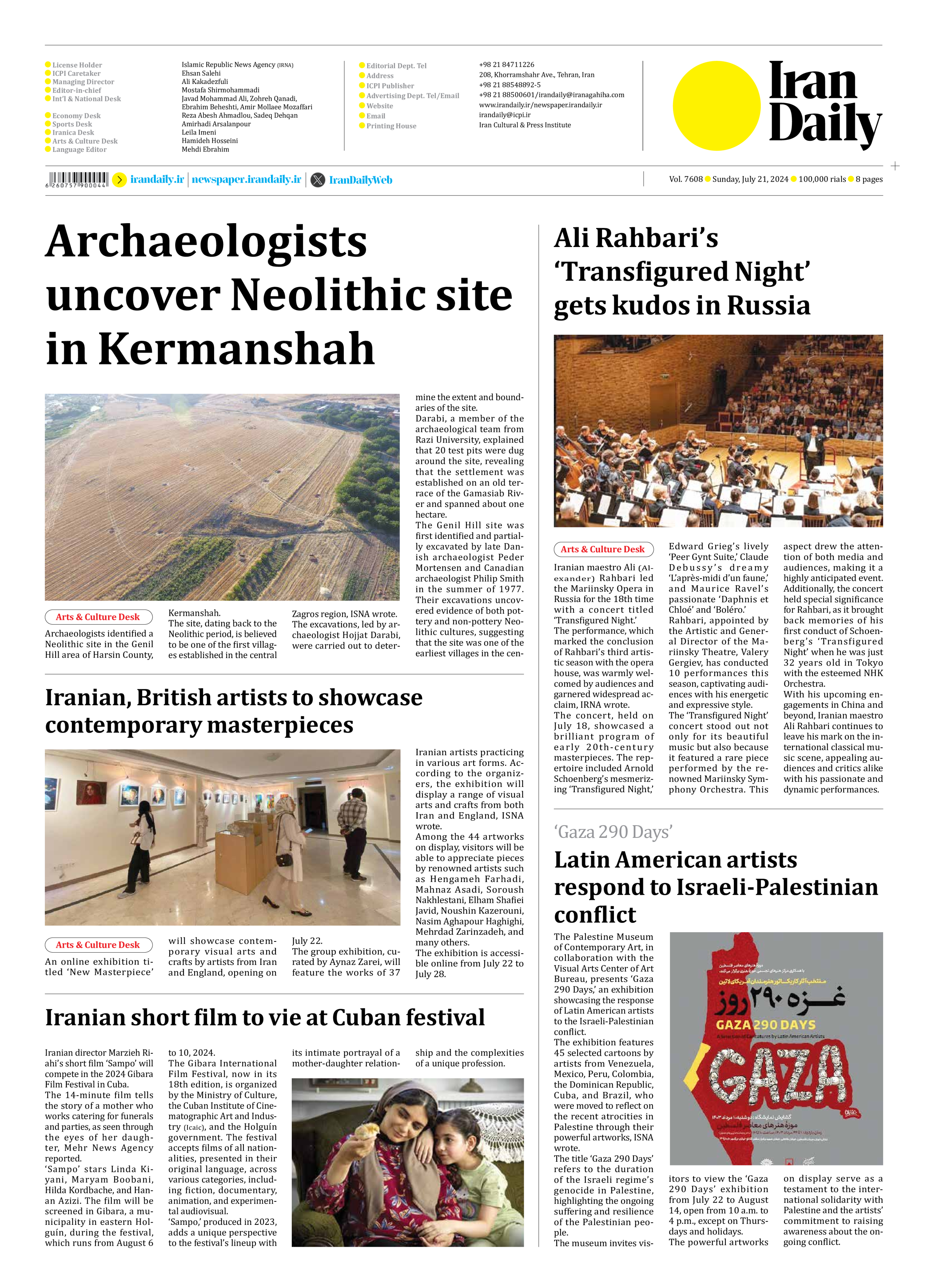
Archaeologists uncover Neolithic site in Kermanshah
Archaeologists identified a Neolithic site in the Genil Hill area of Harsin County, Kermanshah.
The site, dating back to the Neolithic period, is believed to be one of the first villages established in the central Zagros region, ISNA wrote.
The excavations, led by archaeologist Hojjat Darabi, were carried out to determine the extent and boundaries of the site.
Darabi, a member of the archaeological team from Razi University, explained that 20 test pits were dug around the site, revealing that the settlement was established on an old terrace of the Gamasiab River and spanned about one
hectare.
The Genil Hill site was first identified and partially excavated by late Danish archaeologist Peder Mortensen and Canadian archaeologist Philip Smith in the summer of 1977. Their excavations uncovered evidence of both pottery and non-pottery Neolithic cultures, suggesting that the site was one of the earliest villages in the central Zagros region.







